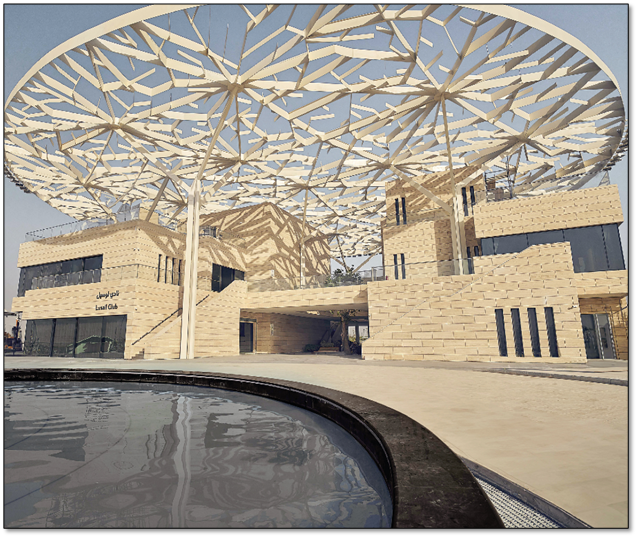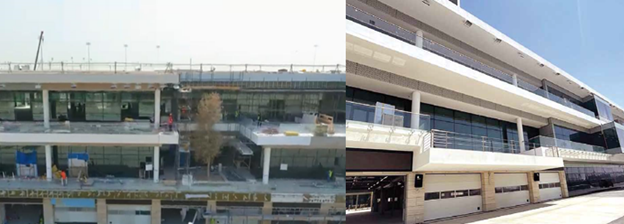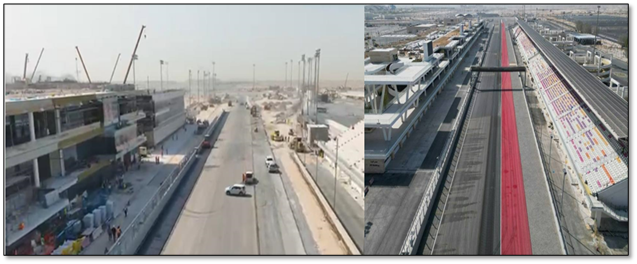Master: Contract, claim and delay management in construction works
Author: Eng. Mahmoud Abdelwahed
Supervisor: Eng. Giovanni Franchi
1.1 Introduction
Nowadays with the current dynamic expansion of construction project management, the effective administration of contracts, claims and delay management, and advanced projects management plays a vital role in assuring the project’s success. This thesis highlights and explores the nuanced challenges of the contracts’ management within the framework of strategic and super fast-track projects, with an intense focus on mitigating delays and successfully managing claims.
Strong forms of Fast-tracking, Dynamic changes in Stakeholders’ requirements and aggressive, sometimes, unachievable schedules for construction projects are becoming increasingly common in project management these circumstances are due to the need for tight schedules, tight budgets, maximizing the outcomes and profits, diminishing of losses, and client desires to commence operations quickly, which lead to daily improvements and developments in the project management to reduce the clients’ risks and ensure on-time deliveries (Ibbs C. William, 2015).
Deep-rooted in and emphasizing the knowledge techniques, and methodologies attained through the Master’s program in Contracts, Law, Claims, and Delay in Construction Projects, this research was developed to highlight the lessons learnt from the Master’s program and how to link it and apply it to the real world’s projects and situations to bridge and to reduce the gap between theoretical insights and practical applications in the field.
The thesis research starts with a detailed and comprehensive review of the projects’ conditions and challenges, supplemented by insights collected and gained from the Master’s lessons, the coursework, and the seminars within the Master’s program. This introductory understanding serves as a foundation for identifying dominant issues and complexities encountered in the Contracts’ management, predominantly and precisely in accelerated projects with limited timelines in fast-track projects.
Going through the modules and drawing upon the multidisciplinary approach adopted by the Master’s program, the research methodology integrates the issues faced during all the stages of the projects and tries to provide qualitative analysis of the project data, and in part of the issues we will go through the quantitative outcome of the issues and risks and the corrective actions that were discussed in the lessons which were driven from the industry best practices, and collaborative engagement with seasoned professionals. Through this consolidated approach, a rigid knowledge and understanding of the importance and interplay between contractual frameworks, project dynamics, and stakeholder relationships were achieved.
The essence of this study and the Fundamental to the thesis is the intention of pioneering and advanced strategies for optimizing contract management in fast-track projects. Leveraging the theoretical theories and the practical practices acquired during the master’s program, rationalize and restructure the dispute resolution approaches, procedures, and mechanisms, and substitute the dispute with team building and collaborative contractual relationships for successive completion of projects.
The outcomes of this thesis offer deep implications for both academic and real-life approaches. For academic discourse, the thesis contributes to the evolving body of knowledge on contract management, the amount of theories and information gained and the theoretical understandings with pragmatic evidence and hands-on insights. For industry experts, the conclusions serve as achievable and practical solutions and guidelines for managing the complicated nature of fast-track projects, permitting stakeholders to be engaged with the project during all phases and proactively diminish or successfully address challenges and maximize project outcomes and profits. In conclusion, this thesis underscores the advantages and pros of applying the knowledge gained through the Master’s program in Contracts, Law, Claims, and Delay in Construction Projects. By creating academic precision with real-world relevance, it demonstrates how managers and decision-makers can manage and administer their contracts and properly intervene in projects to reach tangible improvements in contract management practices, thereby revealing new boundaries of accomplishments in the fast-paced world of construction project management.
1.2 Basis of the Study
The basis of the study is mainly by going through all the stages of a portfolio of fast-track projects from the initiation stage passing through the design of the projects to meet the stakeholders’ requirements moving to the pre-project cost planning and budget estimates including funding approvals and projects estimation highlighting all the challenges faced and how it was sorted out.
The second stage was the construction stage starting with the challenges faced through the tendering and shortlisting specialized overseas contractors and supervision consultants and managing to start the works immediately to meet the project’s strategic requirements including contracts write-up and generating an associated bill of quantities allowing the tenderers to price and apply for these tenderers and responding to the tenderers queries for overseas specialized contractors.
Reaching the construction stage and the post-contract cost, budget management, and facing issues related to incomplete designs and continuous changes in the stakeholders’ requirements and code of practices. Subsequently administering the contract and managing the projects with all these changes trying to meet the tight schedule and deliverables added more challenges which were dealt with using the knowledge and skills gained from the Master’s program.
It was proven that fast-track projects without detailed and precise stakeholder requirements during the design stage always lead to incomplete and clear scope leading to more changes, subsequently more claims, delays, disputes and increased costs of change putting the project objectives under huge risks of failure or major losses to all parties including all stakeholders (Salerno, 1995).
Given the above statement, it was clear that strong and precise procedures dealing with changes and claims should have been prepared and generated, later these procedures were communicated with all parties and pieces of training were conducted to all parties to ensure proper and successful implementation of these procedures.
1.3 Study Objectives and Goals
The main objective of the study is to highlight the challenges in managing massive construction projects with strategic importance in a very tight schedule as fast-track projects and a huge list of changes to meet the stakeholder requirements and how applying new techniques and knowledge might lead to outstanding outcomes that will lead to successful and profitable projects with a win to win healthy situation were all parties will achieve their goals starting by the client getting his projects delivered on time and the contractors achieving the required profits from the execution of the projects they tendered for with a positive cash flow and a fruitful relations with all stakeholders.
The main goal also from this study is to reach a list of best practices and approaches dealing with the current market challenges and circumstances and dealing with the global changes, especially in the supply chain and procurement of special projects where Design and procurement are the main reasons for success.
Another important and crucial objective of this study is to come up with a list of lessons learnt and methods and techniques of dealing with these issues based on the best practices adopted by the projects’ teams during all phases and aspects of the projects from the initiation stage to execution stage and ending with handing over.
1.4 Project Significance
Dealing with and managing projects is a very challenging process which requires planning and micro-management to ensure the success of the projects, however, always there will be mistakes and shortfalls and delays that are acceptable by all parties as a risk that can’t be eliminated, however, dealing with and managing strategic projects which are followed up by the highest level of managers in the country and were deadlines are linked with prestigious events were delays are not acceptable requires different techniques and different methods of management (Agranoff, & McGuire, 2003)
The Project was of very huge importance and significance as it was a strategic project related to a prestigious event organized by international organizations, event tickets were all sold out and these organizations never risk their reputation as there was another event where the country agreed to organize this event got delayed in the construction and it was obvious that the event won’t happen on time so they changed the destination to the nearest country ready to host the event and applied huge penalties on the country with delayed projects, subsequently, all of the top leaders and ministers in the country were following up on weekly basis the progress of these projects and there was a strict Key Performance Indicators (KPIs) set to maintain steady and achievable targets and the penalties associated with each milestone was huge to make sure that the targets and goals won’t be missed.
The project examined in our study and research was conceptualized and initiated as a conglomerate and a set of individual projects, each tailored to specific end-users and overseen by professional teams specialized in relevant domains. This approach necessitated the segmentation of the overarching conceptual project into distinct projects, each managed by teams possessing expertise pertinent to their respective scopes. Over time, this organizational framework evolved into what we term a “portfolio of projects” representing a comprehensive collection of interconnected initiatives arranged and managed to achieve overarching objectives.
1.5 Contextualize and Framing the Projects
One of the most efficient methods of Contract management is to manage the projects with clear performance indicators which focus on monitoring the performance based on the agreed performance criteria and breaking down the major target into different milestones to be able to measure the performance and to be able to take the necessary actions whenever needed (Klijn, Metselaar, & Warsen, 2023).
Our project was mainly about upgrading an existing racetrack to suit the global standards of car and motorbike racing as the government already agreed with the international authorities that Qatar would host these races. Due to the fact that these projects were very specialized where special teams were requested to be engaged with all of the project stages from design to construction and ending with testing and handing over the project was divided into 4 different projects as follows:
1.5.1 Demolition project for the Existing Racetrack and the area for expansion.
The existing track which was not meeting the international standards for cars and motorbikes racing which needed to be demolished to allow for the building of the new track with the new specifications, the demolition works were planned to start and must be completed before the commencement of any other project. Moreover, the early works for the new projects were added to this project from site clearance to cut and fill and any other activities to allow the smooth commencement of other projects.
1.5.2 Upgrade of the Existing Building along with the new Buildings.
The refurbishment of the old buildings and structures that previously accommodated the old tracks aimed to align them with the standards stipulated by international regulatory bodies, while concurrently enhancing their capacity to meet world-class benchmarks. Furthermore, the project scope comprehended the construction of an additional 16 buildings, strategically designed to facilitate the accommodation of spectators and facilitate the various celebratory activities associated with the event.
1.5.3 Building of the new Racetrack and the associated Facilities.
The refurbishment of the old racetracks and structures aimed to align them with the standards stipulated by international regulatory bodies, while concurrently enhancing their quality and standards to meet world-class benchmarks set by the international authorities. Furthermore, the project scope encompassed the construction of an additional 36 buildings including garages for Cars and Motorbikes, toilets, gates for Fans’ and Spectators’ access and egress, and fan zones for entertainment and Food kiosks strategically designed to facilitate the accommodation of spectators and facilitate the various celebratory activities associated with the event.
1.5.4 Roads and Infrastructure for the Surrounding Roads.
In anticipation of the anticipated surge in both vehicular traffic and spectator attendance following the planned upgrades to the existing race tracks and facilities, it became imperative to undertake a comprehensive renovation and upgrade of the surrounding roads and associated infrastructure. This attempt encompassed the transformation of local roads into main highway roads, tailored to efficiently accommodate the projected increase in the volume of vehicles and attendees. The primary objective was to ensure continuous ingress and egress to and from the racetrack, mitigating the risk of traffic congestion or jams that could potentially compromise the prestige of the event.
2.0 Photos and Images of the Project
Fig-1: Changes happened during construction did not affect Quality
Fig-2: Changes happened during construction did not affect Quality
Fig-3: Media Center Building under acceleration
Fig-4: Racetrack and supporters’ main stage





